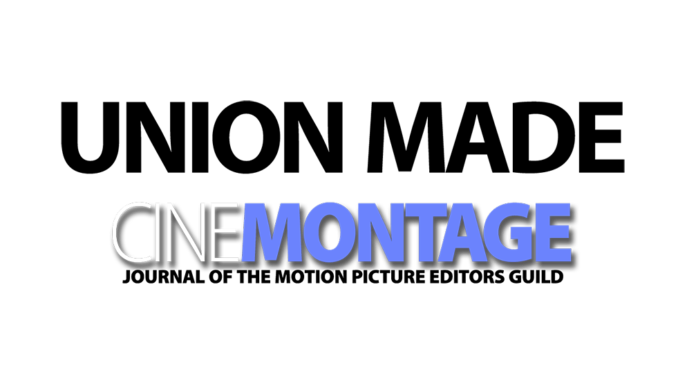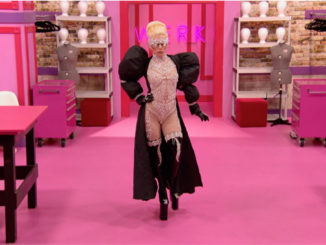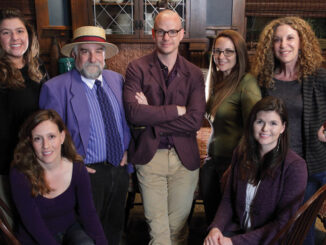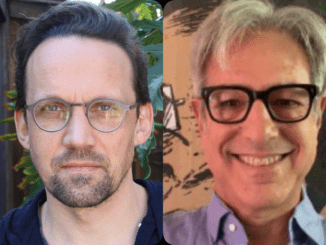
by Peter Basinski, A.C.E.
I grew up in the shadow of the space race. My dad worked for NASA and my brothers and I would ride our bikes to the beach in Indialantic, Florida to watch the Apollo rockets go up, then race home to see the instant replay on TV. Space was the ultimate adventure. When the Apollo program ended, we moved to Dallas and my new source of adventure was found on TV and at the movies. I may not have been able to go to the moon, but the movies could take me anywhere. By the end of high school, I decided to enroll in the University of Texas Austin’s film school. And after my first editing exercise, I was hooked. Editing was how dreams were made!
Upon graduation, I was hired by a commercial production company in Dallas and began my real education. We had editing rooms in-house but, in the commercial business, the ad agency often bids editorial separately. So, I had to do a bit of everything. I was a PA, grip, craft service person and production coordinator — sometimes all at once! It was a crash course, but well worth it. I cut my first commercials when we won the Tony Llama Boots account. The director gave me free reign to cut and, with a few changes, the cuts were approved. After that, I became our staff editor.
At that time, offline editing was done mostly with three-quarter-inch and VHS editing systems using burned-in time code and hand-written EDLs. Later, I worked for a post facility that was a test site for the Montage Picture Processor — a pioneering system in nonlinear editing. It used 17 duplicated beta decks as source material because digital storage was still the size of a refrigerator. That was a game changer. I immersed myself in the new technology, editing for as many clients as possible. When the NAB Convention came to Dallas, our Montage edit bay was used as the demo site. Editors from LA were on hand to demonstrate how the system was used for TV and film editing.
The bonus for teaching was being able to work with the editors constantly. They let me practice cutting temp sound and music, which was a great way to discover how he cut picture.
It was an epiphany; my editing system was being used in the big leagues! This was my chance to leave the non-union commercial world for the controlled environment of a union editing job. I immediately began making inquiries in LA. My boss suggested I contact Pacific Video in Hollywood; they provided post services and Montage systems for network shows. That was all I needed to know.
I packed everything I could and headed for Hollywood. My first job was a sales film for Carnival Cruise Lines and I booked all of the post with Pacific Video, which led to the company’s Leon Silverman recommending me for my next two jobs: assisting and teaching the Montage system to editor John Axness for a feature comedy and editor Kevin Krasny on a TV pilot. I was on a roll. But still the question: How to get into the Editors Guild?
To my surprise, the answer appeared in a message on my phone machine. Fred Chandler, vice president of post-production for Paramount Television, wanted me to interview for the assistant editor position on a union show! Silverman had again recommended me. The job was to assist and teach editor Roger Bondelli, A.C.E., the Montage system. The deal was done and everything was great! Until my first day on the job…
Enter Editors Guild Field Representative Hank Schloss. He spotted me and said, “You’re the guy I’m looking for. You’re not supposed to be here.” I was mortified. Was I going to be fired my first day? I knew I had been hired off the roster, but I thought the studio had taken care of everything. Paramount explained that I had a unique skill set needed for this job: teaching the Montage system. At that time, editing technologies were changing rapidly and the Guild didn’t have the training resources we have now, so my track record teaching the Montage got me into the Editors Guild.
The bonus for teaching was being able to work with the editors constantly. Bondelli let me practice cutting temp sound and music, which was a great way to discover how he cut picture. The next season, I assisted Russ Denove, another great mentor who taught me to cut scenes and sound effects, and later gave me my first credit (shared) as editor.
My last teaching/assisting job was for the late, great Dann Cahn. He would work me through the cutting process, always explaining why a scene should be cut a certain way. What an experience. The show was short-lived and Dan and I went our separate ways, but the producers invited me to join them as an editor on their new series.
Now, 20 series later, I’m still living the dream and dreaming up my next big break.





